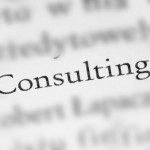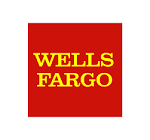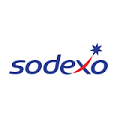Organization Optimization
Accredited Consulting Service for Ms. Weaver MPA MS BS Accredited Executive Consultant (AEC)
The Appleton Greene Accredited Consultant Service (ACS) for Organization Optimization is provided by Ms. Weaver and provides clients with four cost-effective and time-effective professional consultant solutions, enabling clients to engage professional support over a sustainable period of time, while being able to manage consultancy costs within a clearly defined monthly budget. All service contracts are for a fixed period of 12 months and are renewable annually by mutual agreement. Services can be upgraded at any time, subject to individual client requirements and consulting service availability. If you would like to place an order for the Appleton Greene Organization Optimization service, please click on either the Bronze, Silver, Gold, or Platinum service boxes below in order to access the respective application forms. A detailed information guide for this service is provided below and you can access this guide by scrolling down and clicking on the tabs beneath the service order application forms.
Bronze Client Service
Monthly cost: USD $1,000.00
Time limit: 5 hours per month
Contract period: 12 months
SERVICE FEATURES
Bronze service includes:
01. Email support
02. Telephone support
03. Questions & answers
04. Professional advice
05. Communication management
To apply – CLICK HERE

Silver Client Service
Monthly cost: USD $2,000.00
Time limit: 10 hours per month
Contract period: 12 months
SERVICE FEATURES
Bronze service plus
01. Research analysis
02. Management analysis
03. Performance analysis
04. Business process analysis
05. Training analysis
To apply – CLICK HERE
Gold Client Service
Monthly cost: USD $3,000.00
Time limit: 15 hours per month
Contract period: 12 months
SERVICE FEATURES
Bronze/Silver service plus
01. Management interviews
02. Evaluation and assessment
03. Performance improvement
04. Business process improvement
05. Management training
To apply – CLICK HERE
Consultant profile
Ms Weaver is an approved Executive Consultant at Appleton Greene and she has experience in human resources, management and globalization. She has achieved a Masters of Public Administration, a Master of Science in Sociology and a Bachelor of Science in Criminal Justice. She has industry experience within the following sectors: Consumer Goods; Food & Beverage; Travel & Tourism; Manufacturing and Banking & Financial Services. She has had commercial experience within the following countries: United States of America; France and Canada, or more specifically within the following cities: Gaithersburg MD; Chicago IL; Washington DC; Orlando FL and Alexandria VA. Her personal achievements include: developed consulting business within corporation; developed multi-year global initiative strategy; developed employee diversity competencies company-wide; led global initiative engaging executives and managed multi-year projects and consultancy. Her service skills incorporate: diversity & inclusion; strategic planning; change management; learning & development and project management.
To request further information about Ms. Weaver through Appleton Greene, please CLICK HERE.

Executive summary
Organization Optimization
The field of human and organizational effectiveness consulting has expanded tremendously over the last several decades to include organization development and change, organizational transformations, change management, multiculturalism and cross cultural organization development, and more. As an Executive Consultant my work has expanded to include all of these areas as well as partnering with the client to clarify the business case or the rationale for why the business should conduct organization development interventions. Human and organizational effectiveness work is grounded in systems theory meaning organizations are open systems so a change in one area of the system results in change in other areas. This work is also informed by data acquired through proactive inquiry and assessments of the organization’s environment. All of these aspects are taken into account when conducting the assessment. The results of the assessment usually lend themselves to a compelling need for change, and thus a desired future state is in order. Common methodologies of assessments include survey feedback, interviewing, focus groups, process consultation and observation. This work is also client centered meaning it focuses on the client’s needs and promotes the client’s ownership of all phases of the work so that the client will be able to sustain the change.
The organization development discipline has evolved to the point where the diagnostic component of the work is most critical because it clarifies the current state of the organization and lends itself to the determination of the path forward. The impetus for initiating the organization development work has shifted over the years. As an Executive Consultant, organization call upon me whenever they are about to undertake a major change effort such as implementing new systems, or downsizing, or introducing new technology, as well as mergers and acquisitions. Engaging senior leadership as change champions in supporting and driving the initiatives financially, in communications, and in demonstrating excitement and energy when modeling desired behaviors are key. Senior level sponsorship of initiatives goes beyond lip service to actually allocating funds, modeling behaviors consistent with the initiative, participating in training that supports the initiative and articulating the business case for the initiative.
When considering how to improve organizational effectiveness, companies take into consideration their competitors, their end users (customers) as well as the needs of their employees. Oftentimes organizations engage in human and organizational effectiveness initiatives in order to better understand employees’ interests and levels of engagement, to increase productivity, to increase growth, and to increase customer focus. When attempting to drive change initiatives, organizations often experience resistance in the form of fear of the unknown, concerns about how it will affect each employee and their work and productivity, or concerns about organizational capacity or employees’ capabilities. Another key element in engaging in organization effectiveness work is the identification of stakeholders. In designing interventions, organizations often determine how the new initiative integrates with existing human and organizational systems.
Service Methodology
As an Executive Consultant, my work targets three major audiences, large corporations, small to mid-size businesses and corporate leaders and executives. My work with large corporations and non-profits involves partnering with leadership to understand their pressing issues and challenges, taking a fresh look at the organization and applying organization development interventions and effective change management methodologies to help navigate the organization from its current state to the desired future state. I have experience working across numerous industries including Consumer Goods, Food & Beverage, Travel & Tourism, Manufacturing, and Banking & Financial Institutions with employees at all levels from the executive suite to frontline operations. My work involves effectively facilitating strategic dialogue, planning, and decision making, implementing leadership development, organization development, and diversity and inclusion programs and initiatives, and engaging training and managing employees through transitions, while embedding organizational practices to sustain results.
My work with growing businesses involves providing business consulting and coaching. I use proven methodologies that help business executives and their leadership teams gain control of their time, set their business apart from the competition, turn growth into a science, and create a high performance culture that develops leaders who work together to grow the business. I serve as an objective sounding board for my clients to brainstorm and share concerns confidentially. I draw upon my expertise and robust business consulting and coaching tools to help my clients resolve issues in a highly effective manner that achieves sustainable results.
I also specialize in helping corporate leaders who have experienced setbacks, derailments, and stagnation in their careers to recover from these challenges quickly and continue progressing through their professional life achieving a more fulfilling and successful livelihood. I take the time to understand the leader’s unique strengths and identify those factors hindering them from performing optimally. I help clients experience breakthroughs, propelling them forward in their careers, heightening their awareness and their ability to exercise conscious choice in their path forward. I help clients examine who they ideally want to be, how they want to lead, and what they want from their lives and careers, and help them devise a plan to achieve that which they desire, and ultimately become the absolute best that they can be.
Service Options
Companies can elect whether they just require Appleton Greene for advice and support with the Bronze Client Service, for research and performance analysis with the Silver Client Service, for facilitating departmental workshops with the Gold Client Service, or for complete process planning, development, implementation, management and review, with the Platinum Client Service. Ultimately, there is a service to suit every situation and every budget and clients can elect to either upgrade or downgrade from one service to another as and when required, providing complete flexibility in order to ensure that the right level of support is available over a sustainable period of time, enabling the organization to compensate for any prescriptive or emergent changes relating to: Customer Service; E-business; Finance; Globalization; Human Resources; Information Technology; Legal; Management; Marketing; or Production.
Service Mission
My vision is to be a nationally and internationally recognized and respected management consultant and coach known for leveraging optimal talent to deliver customized services that exceed client expectations. My mission is to raise the consciousness, maximize the potential, and enhance the effectiveness of every client I serve. There are six foundational operating principles that underpin every consulting and coaching engagement, namely, Operate with Integrity, Demonstrate Care and Concern, Maintain Confidentiality, Communicate Clearly and Concisely, Master the Process, and Achieve Results.
My approach to consulting encompasses believing in providing my clients with my very best thinking, talent, skills, and resources to exceed their expectations. I have a unique approach to consulting which starts with building a relationship with the client, by establishing trust in the four C’s – Commitment, Competence, Communication, and Content. I invest ample time in getting to know and understand the client’s business, and help the Client clarify business needs, challenges and opportunities. I collaborate with the client throughout the entire consulting engagement, by ensuring there is complete buy-in and co-ownership in the consulting effort. I design and develop customized solutions tailored to address the client’s specific business needs, taking into consideration, the company culture. I implement multi-faceted interventions to effectively and purposefully address the needs, challenges and seize opportunities as we achieve results. Last, but certainly not least, I am committed to leaving the client’s organization better-off than when I started. I evaluate the process and the results and ensure the client’s expectations have not only been reached, but rather have been exceeded.

Service objectives
The following list represents the Key Service Objectives (KSO) for the Appleton Greene Organization Optimization service.
- Strategy Development
“Leaders establish the vision for the future, and set the strategy for getting there.” John P. Kotter. In today’s environment of complexity, ever changing priorities, emerging technologies, and conflicting agendas, creating a long term strategy can seem like a daunting task. Yet when senior executives take the time to develop a thorough, thoughtful strategy, the significantly increase the likelihood and odds for business success and sustainability. Strategy creation is a journey. The consultant works with senior leadership to engage them in in-depth interpersonal dialogue and exchange and open debate to diagnose the company’s current state. The consultant facilitates executive leaders in clarifying: How and why the company makes money in its core business and ancillary businesses and Where the company loses money, or is less productive. The company’s strengths weaknesses, opportunities, and threats, as well as How its competitors make money. Given the outcomes of the above current state analysis, then the Consultant works with the company in forecasting what future business or work the company should engage in. Taking into consideration the current state and desired future state, the Consultant helps the leaders develop and consider options including pros and cons in order to determine possible pathways forward. The outcomes of this work result in selecting the right combination of paths to move the business forward, and become part of the integrated strategy. The strategy is then further developed into a strategic action plan, wherein resources are allocated or reallocated, and responsible parties are assigned to deliver against the plan. This is a critical juncture in strategy development and planning, because – “Success doesn’t necessarily come from breakthrough innovation, but from flawless execution. A great strategy alone won’t win a game or a battle; the win comes from basic blocking and tackling.” Naveen Jain. Flawless execution takes leadership commitment and clear accountability, interim goal setting in alignment with the strategy, clear communications clarifying who will do what differently, and clarifying how and why they should do it. The consultant is available to work with the leadership and designated staff throughout the implementation of the plan to ensure full implementation and desired results. Change Management consultation including Communications Planning is often coupled with strategy implementation. - Diagnostic Assessments
At the highest level of the organization such as divisions and business units, an organizational diagnosis is the process of collecting and analyzing information to determine the current state of how an organization is functioning, which may include strategy, organization design, culture, goals, and processes. This work provides information that informs how to design subsequent interventions to exact the type of change that will aid the organization in achieving its desired future state. While an organizational diagnosis could focus on several areas for potential improvement, the consultant and the client jointly determine the organizational issues on which to focus, and jointly determine how best to collect and analyze the data. Once the root causes of the organizational issues are determined, then recommendations for action planning to address the issues are determined. Organizational diagnoses usually lead to change interventions that improve organization performance and productivity. At the department level, diagnosis often includes understanding the structural design, processes, and the interactions within and between departments to accomplish the work. At the group or team level, diagnosis often involves clarifying the interactions among team members in leadership, follower-ship, group composition, goal clarity, execution, problem solving, decision making, communications, and determining how to increase team effectiveness. At the individual level, the position or job may be analyzed for the purpose of determining whether the job is appropriately designed, tasks are sequenced appropriately and the like to accomplish the work efficiently and effectively. Appropriate skill sets for success in the position are also analyzed for determining individual/job fit. In addition to assessing the organization’s functioning, its structure, processes, and jobs, individuals may also be assessed to gain understanding of their leadership style, role, competencies and skills. At the individual level, the employee’s competencies and skill levels may be compared to leadership competencies and skills to determine strengths and skill deficits, and/or behavioral style hindrances that contribute to success or challenges in the workplace. - Organization Redesign
In the dynamic corporate environment where companies are continually challenges to innovate, shift or alter strategies, or even reinvent themselves to remain competitive in local and worldwide markets, to grow, and to prosper, the unique ways in which an organization modifies its strategies directly impact how an organization structures or designs its work to ensure alignment with its strategies. The strategic architectural design of an organization informs how work is organized and coordinated, and greatly influences how work gets done. The consultant works with the business leader to determine whether organization structure redesign is the appropriate organization effectiveness tool to address the business challenge by reviewing key indicators or triggers. Once it is determined that organization restructuring is needed, then a review of current work and the current organization structure is necessary, along with a clarification of the desired future work. Then a determination is made about how the current structure addresses or fails to address the desired future work. The consultant and leader then determine whether the current structure should be maintained or if the structure should be changed. During the next phase, the consultant and business leader determine how best to group work, positions, and other resources, align talent, and improve workflow. Options are developed for structuring work units, positions, and work flow. Steps are then taken to validate the proposed structural options, assessing how each of the proposed new structures would enable the desired future state of work in the organization. Once the organizational restructuring options are assessed and validated, senior leadership determines approval. Then an implementation plan is developed to manage the process for establishing the new structure. Often the implementation plan includes change management for implementation success. - Change Management
Change Management involves preparing an organization for change and providing guidance through a change effort by assessing and creating a readiness for change, overcoming resistance, creating a vision, engaging key stakeholders, managing the transition, and sustaining the change over time. Successful implementation of an organizational change is highly dependent upon how well the employees move through the change. In fact helping people through the change effort, is one of the critical success factors for effectively managing projects. Change Management has several major phases including: 1) Preparing for Change – This phase includes the Consultant collaborating with the client to clarify the Change Management Strategy and obtain necessary resources. Stakeholder Engagement which also occurs during his phase involves obtaining sponsorship and identifying and engaging stakeholders’ support to enable the change, and identifying a Change Management Team. Clarification of the roles, responsibilities, and expected activities of all stakeholders is also critical in this phase. The Consultant works with the Sponsor and the Change Management Team to build their competencies in change management. 2) Managing the Change or the Transition – This phase includes clarifying, sequencing and engaging others in executing all of the activities necessary to move the employees from the current state to desired future state. The primary aspects of this phase of the change are to develop Change Management Plans and to take actions to implement the plans. Some of this work includes motivating change by creating an awareness of the need and the business reasons for the change and ensuring organizational readiness for the change. This effort involves engaging employees and creating the desire for change and managing resistance so that they commit physical and psychological energy to the change effort because there are perceived compelling reasons for the change. A key component of this phase is the development and execution of the Communications Plan. The Communications Plan helps to create the vision conveying the purpose and reason for the change – that is the ‘why’ and the ‘what’ for the change. In addition the Communications Plan aids in keeping the employees abreast of what is going to happen and how, and creates a feedback loop to incorporate the employees perspectives and concerns. In addition, most change efforts require that employees learn new skills and competencies. The Consultant may engage in coaching the leader and developing and managing the delivery of training to develop the necessary skills and competencies of the employees to be able to fully embrace and succeed in the ‘future state’. 3) Sustaining Momentum or Reinforcing the Change – This phase involves monitoring the compliance to the change effort, and ensuring feedback is gathered from employees to determine the effectiveness of the change effort. Gaps in desired results and actual results should be addressed with corrective actions. Any early successes should be celebrated. Managing resistance is key during this phase. This work includes maintaining the support system necessary to sustain the change, as well as putting in place rewards or reinforcements to keep the change in place. - Leadership Coaching
The purpose of coaching is to foster individual development. Coaching is the practice in which the coach and client collaborate to assess and determine the client’s developmental task to grow as a leader. Throughout the coaching process, the consultant serves as coach, and together coach and client challenge current constraints while exploring new possibilities. The two mutually ensure accountability and support for reaching goals and sustaining development. Leadership Coaching involves formal one-on-one coaching wherein the coach and client enter into a formal written or verbal agreement that coaching will occur. Key elements of coaching include the establishment and continuous development of a relationship between the coach and client, an assessment, challenge, and on-going support, and the achievement of results or visual outcomes of the coaching process. Assessments may include the client completing a self-assessment, or multi-rater assessments such as 360 degree feedback, and clarifying and gaining understanding of the client’s prior experiences. Assessments provide insight into the client’s own perceptions as well as the perceptions of the client by others. The findings from assessments highlight developmental needs, and inform development goals. The relationship between the coach and the client is crucial to the client experiencing transformative behaviors that enhance the client’s ability to succeed. The consultant focuses on building rapport for a trusting, respectful, and non-judgmental and confidential relationship. The coach and client engage in a collaborative relationship where each contributes his knowledge and relevant experiences to helping the client develop. The client brings essential understanding of himself and the organization or group context, while the coach brings expertise in leadership development and behavioral change processes. The coach and client commit to a course of action to fulfill their respective responsibilities throughout the coaching process, in spite of obstacles and challenges. The coaching process leverages the findings of the assessment(s), challenges behaviors, and provides support to the client for the purpose of identifying behaviors that are creating undesirable results and determining the thoughts and feelings that are the drivers and triggers for those behaviors. The coach helps the client work through challenges to shift to a set of behaviors that foster development and growth. The coach provides continuous support to see the client through to achievement of his desired results including behavioral change, personal and professional development.

Achievements
Wells Fargo
Leveraged the analysis of the qualitative and quantitative scorecard data from multiple functional areas within the line of business including Talent Acquisition, Talent Management, Compliance, Employee Engagement, Executive Leadership, Communications, Marketing, Supply Chain, and Corporate Philanthropy coupled with corresponding recommendations to influence the Consumer Lending Group’s decision making, goal setting, and the business unit’s approach to expanding the customer base, and developing internal and external products and services. Achieved structural reorganization by consolidating and streamlining the number of working councils, thus eliminating redundancy and simplifying efforts, determining the most effective, impactful work that optimized employee engagement, and aligned with and advanced the enterprise-wide strategy
Marriott International
After the 9-11 terrorist attacks, the company and the entire travel and hospitality industry experienced an extreme reduction in stay because both business and leisure travelers were gripped with fear, and chose not to travel due to the perceived unsafe environment. In response to this dire business setback, Kim Weaver and the Organizational Capability team developed the “Guide to Organization and Talent During Right Sizing”. This guide was used to assess the nature of work and human capital priorities within each line of business, and to equip the working teams that were assembled within each line of business and charged with streamlining daily priorities, reducing the budget, and enhancing management efficiencies. As a result of Kim’s developing the Organizational Development and Talent Management Toolkit and utilizing its content to educate and train the Senior Vice Presidents of Human Resources on how to use the tools to conduct organizational capability work, these leaders partnered with the business leaders to restructure their lines of business, redesign work processes, facilitate change management, and ultimately make business operations more effective and efficient with fewer human capital and a reduction in financial resources.
The Walt Disney Company
Successfully transitioned from a decentralized health care system with multiple clinics for employees (cast members) across the property to one centralized health care unit to service all employees at the location and to leverage technology to provide more efficient and effective service. Achieved operational excellence, eliminated duplication of efforts, reduced time to serve, increased customer satisfaction, and retained current staffing levels. Successfully documented the process of developing new theme park rides from initial idea through the creation, development and implementation. As a result key stakeholders gained greater clarity about which stakeholders were involved in the process, their roles, level and extinct of engagement, and the nature of their engagement. The process redesign efforts resulted in a reduction of planning time, reduction in time to design and develop theme park rides, and major cost savings in developing future rides.
Sodexo
Ms. Weaver’s role in change management, organizational culture change, employee engagement and learning and development, and organizational development consulting resulted in the following achievements: A transformation of the corporate culture from one of divisiveness, dissension and low trust to an highly recognized, Best Places to Work environment with a winning culture that reflects significantly increased employee engagement scores, and receives a minimum of 15-20 industry awards annually; An internal business consulting practice that helped the company expand a client contract from $30 million to $200 million by shifting the purchasing conversation from the procurement office to the C-Suite and greatly expanding the business offerings; Rescuing 15 client contracts and hundreds of employee assignments from being terminated by conducting organizational assessments and organizational development interventions at clients’ sites; The development of 20 different learning and development modules that increased the competencies of 60,000 domestic and global employees by providing cost-effective learning sessions that were completed on schedule and under budget and The training of 13,000 employees in compliance over 12 months, leveraging 16 consultants to provide training at 76 sites across the country.
McCormick & Company, Inc.
As a result of Ms. Weaver’s leadership, the company achieved the following: Engaged employees in influencing product development and commercials and advertising for the company which resulted in increased product sales; Broadened outreach to and recruitment of talent to meet specific business needs that resulted in business growth and innovation; Increased knowledge and competencies in ethical behaviors of employees globally resulting in the company being recognized as a Best Place to Work; Increased philanthropic giving and company sponsorship of community activities; Increased employee engagement in decision making in the marketing and the business expansion into multicultural markets and Increased knowledge and competencies of management in the economic value of diverse suppliers resulting in doubled the company spend with diverse suppliers
More detailed achievements, references and testimonials are confidentially available to clients upon request.

Industries
This service is primarily available to the following industry sectors:
Consumer Goods
The United States is the global leader in consumer goods because of its extensive creative product development, broad diversity of manufacturing, extensive and creative marketing, patented and innovative market research, advertising and branding, and its skilled workforce. Within the consumer goods industry, small, midsize, and large corporations produce its products, and there is a healthy consumption of consumer goods manufactured in the US and abroad. The industry is comprised of products that are durable with a life expectancy of more than three years like automobiles, appliances, sporting goods, home furnishings, electronics et cetera as well as nondurable products such as food & beverages, cosmetics, and toiletries to name a few. Consumer goods account for two thirds of the volume of trade globally and a significant proportion of the gross domestic product of most every country’s economy. Competition for the varied consumer tastes drives companies to create their consumer products to appeal to different audiences based on income levels, personal preferences, and other factors. Trends in consumer products include the following: 1) Increasing reliance on technology to communicate with consumers, including customer relationship management tools and applications that collect information on consumer behavior; 2) Increasing number of mergers and acquisitions and alliances and 3) Increasing market share among diverse consumers, and delivering products that appeal to diverse consumers.
Global Demographics: Looking ahead, an emerging trend is growing the consumer goods business internationally particularly in those countries with increasing income levels in emerging markets like the BRICS countries of Brazil, Russia, India, China, and South Africa. Demographic trends globally significantly impact the consumer goods industry. The aging populations of Europe and the United States will demand more cosmetics and anti-aging products as well as vitamins and supplements to maintain youthful appearance and vitality. People living longer will require more medical devices such as hearing aids, walkers, electronic scooters, etc. The younger generation’s affinity for technology will demand more cellular phones and electronic personal devices. Weight management will continue to be a trend as the demand for diet and exercise products continues to escalate. Regulation: Regulators of consumer products continually monitor the impact of products on consumers’ health and wellness. Protecting and securing of consumers identities and private information is continue to be a challenge and a risk factor for the consumer products industry as hackers and other violators become more sophisticated and breach company databases and firewalls. Consolidation vs Fragmentation vs Coherence: Historically, Consumer goods leaders have focused on growing their companies to CPG leaders have make their company as large as possible or to position it for eventual sale to a giant conglomerate. They continually assumed that offering more and more product volume was better whether or not they had the capabilities to manage the volume. With the advantages of size, international penetration, scale, and retailer satisfaction, one would expect bigger companies to do better than the vast majority of their smaller peers. However, many previously solid CPG companies have begun to lose their way on the path to profit.
Food & Beverage
The food and beverage industry includes companies involved in the production including processing raw food materials, fresh and prepared foods and other edible goods, as well as alcoholic and non-alcoholic beverages and packaging and distributing them. Distribution includes shipping foods and retail outlets and restaurants and directly to consumers. The key drivers of the industry are consumer demands including tastes and demographics including age, household size, and disposable income. Effective marketing, good product mix and superior service make the industry’s products more appealing while efficient operations help companies manage the costs of production. The leading companies in the US food processing segment include SYSCO, US Foodservice and McLane Company. PepsiCo, Coca Cola, and Dr. Pepper-Snapple lead the non-alcoholic beverages segment, while Annheuser-Busch and Miller Coors lead the alcoholic industry. Some of the current trends in the foods industry include the following: 1) Consumers are purchasing more generic foods versus name brand items; 2) Obesity; 3) Healthy Foods and 4) Marketing, Building & Maintaining Consumer Loyalty.
Continued success in the Food & Beverage industry will involve strategies that stand in contrast to consolidated growth companies which base their decisions primarily on financial performance and that may therefore be more apt to stay in a product segment that doesn’t fit, redirecting funds that are needed elsewhere. Coherence will be the name of the game. Coherence is a company’s ability to concentrate its resources and collective intelligence, and marshal all of them in the service of a well-aligned group of products and services with a focused strategic direction. Highly coherent companies have three to six major distinctive capabilities, all of which are integrated into a single system that is used throughout the company. This type of strategy and management execution allows companies to be efficient in their activities, disciplined about their portfolios, and differentiated in the eyes of customers. Coherent companies that have faired well recently and will continually grow in dynamic and diverse environments are Starbucks, Coca Cola and PepsiCo. In the future, these coherent companies will: focus their investments on relatively few capabilities, increasing their mastery of those critical areas; strategically focus on obtaining gains through efficiencies; make more prudent portfolio decisions regarding which products to acquire or divest and provide more opportunities for their people, and clarifies how their roles fit into the overall strategy and direction. Marketing Shifts: Rather than marketing via prime time television, companies will recognize that with a cable audience divided among hundreds of channels, prime-time network television isn’t necessarily the smartest or most efficient buy. The future of marketing consumer products lies more with the newer outlets, including infomercials, custom-designed Internet sites, and social media such as Facebook offer better options. Creativity and promotional skill will determine marketing success. Many CPG companies will their own branded experiences through websites or mobile phones — an approach called private label media. Future Market Contracts: Also, many food manufacturers participate in the futures markets by entering into futures contracts to ‘hedge’ against prices that fluctuate for their inventories of raw materials.
Travel & Tourism
The travel, tourism, and hospitality industry is comprised of some 25 sub-sectors, including three major sub-sector industries that make up over 50% of total travel industry output: 1) Accommodations – which account for 20% of total travel industry output; 2) Food services – accounts for 16% of travel and tourism output; 3) Air travel accounts for nearly 16% of travel and tourism output. In 2012, the US travel and tourism and hospitality industry generated nearly $1.5 trillion in economic output. The industry generates approximately 3 % of gross domestic product. Expenditures by international tourists to the United States generate sales of over $16.6 billion. Key trends: Consumer loyalty: To continuously build and maintain customer loyalty, the Travel, Hospitality and Leisure (THL) industry is continually marketing via social media and review sites, and ensuring its online presences is accessible via mobile technology. Improving operational performance and leveraging technology innovation: Successful industry operators may need to be aware of and be able to quickly adopt new technology for the purpose of information, promotions, bookings and reservations, and general management-control systems. Asset Ownership versus Branded Hotel Management: Historically, the hotel industry invested in building ‘brick and mortar’ hotels, and then continually invested in their maintenance, upkeep and remodeling for updating. Some hotel chains however, including Marriott International made a business decision to shift its primary focus from hotel ownership to hotel management and engaging franchise owners.
Competition: Airbnb has recently emerged as a major source of competition for hotels, that allows travelers to stay in individuals’ homes thus reducing travel costs and making the travel stay and experience unique. In the future, airlines are forming alliances with foreign carriers which afford them the opportunity to expand travel services for customers who travel from their home countries to other countries abroad. Global expansion and growth in emerging markets: As broadband connections and credit card penetration grow in these developing markets, online travel bookings are likely to increase, driving the need to access consumers in these new markets through online branding and marketing. Hotels and restaurants are continually expanding in global markets particularly Asia and South America. Many are expanding their brand globally via joint ventures with local partners and operators leveraging licensing agreements. Attracting and retaining talent: Given the sophistication of international travelers, successful employees will need to understand how to cater to customers of different cultures. Security in the era of international terrorism: Travelers are increasingly concerned with safety and security, and to the extent that they perceive heightened security measures, they may change their travel behaviors by avoiding air travel, or avoiding particular terminals, avoiding routes with bridges or tunnels, or avoiding travel in groups. Increasing Travel of Senior Citizens:. Aging Baby Boomers in retirement will be a key market for the travel and tourism industry on cruises as well as vacation destinations. The travel, tourism, and hospitality industry will need to adapt accessibility, activities, and equipment to meet the needs of senior travelers.
Manufacturing
Recently, manufacturing has rebounded in the United States as the consumer demand for information and automation systems and related products increases in the age of information, automation, and technology. There has been a surge in the demand for robotic systems, data acquisition and information management systems, as well as programmable controls and more. Manufacturers are prioritizing seeking ways to reduce costs, improve quality, and increase productivity. Companies are increasing their use of robotics in the plants which results in downsizing the non-skilled labor, and hiring skilled employees who could manage advanced manufacturing plants. Identifying workers with the right skills in advanced manufacturing, and supply chain management is a challenge most manufacturing companies are facing. The demands for maintenance of the technology in the plants is increasing as well, and skilled labor including technicians and high tech maintenance personnel who are required to maintain and repair today’s equipment are in short demand. Robotics coupled with vision systems enable the reading of bar codes, color and size, thus expediting the movement of products. The Supply chain management ecosystem, the work associated with planning, sourcing, making, delivering and returning the materials and products necessary to manufacture products has now become an integral part of manufacturing as much of the success in manufacturing is related to getting the right materials, that meet the right specs, and for the right costs and delivery times to meet the customers’ needs. Manufacturers are using scorecards to strategically monitor and measure their performance and their suppliers’ performance to ultimately meet the company’s customers’ needs and expectations, time to market in a competitive environment.
In the future, information systems, technology and related behaviors including social and mobile, and cloud computing will continue to change the world of manufacturing by helping companies increase efficiencies and innovate to meet consumers’ ever changing needs. Social media will continue to force manufacturers to be more consumer-centric. Consumers will continue to expect products on demand, and shop and compare products and prices on line or their mobile devices, placing greater expectations around product type and delivery and costs upon businesses. Regarding the workforce of the future, to address the manufacturing skills gaps, colleges and universities must respond to manufacturers needs for highly technically trained employees as well as those who can work in the fields of research and development in manufacturing. In addition, manufacturers will need to provide earn while you learn opportunities to develop the talent they are seeking. Government has increased funding for manufacturers who are focused on innovation, originality in design and speed to market to upgrade their plant equipment and technologies. The trend of outsourcing manufacturing to international countries will continue to shift due to the higher costs of shipping, the challenges of managing global supply chain operations, and the need to accelerate speed to market. Manufacturers will be focusing on making products closer to where they will be sold, and re-shoring more operations back to the United States.
Banking & Financial Services
Some current trends in the banking and financial sectors include the following: Technology – The financial industry leverages technology to make banking more readily accessible from anywhere. Mobile banking is emerging as the preferred practice for today’s transient customers, as paper checks are becoming extinct. Customers can check and monitor their bank accounts online, and even receive text messages if their balances are low. Operations in the securities industry have become automated as well. The internet has enable insurers to be able to access credit reports instantly. Analysis via computers enables financial analysts to generate models when analyzing markets and creating investment strategies; Diverse Customers – The financial industry is challenged to develop products and services that meet the needs of a diverse customer base. Financial industry surveys and studies show that consumers of different ethnicities, gender, sexual orientation, socio-economic status, age, and even geographies have varying financial goals, priorities, habits, and behaviors when it comes to saving, spending, investing, and managing money. Financial institutions are actively engaged in researching and becoming astute in understanding and communicating with their customers to provide the products and services to best meet their needs; Deregulation – The trend of deregulation of where banks can operate and the services they can provide has opened up former restrictions in geography and product so that the banks can have more diverse product offerings. The Gramm-Leach Bliley (GLB) Act permits banks to engage in underwriting securities and underwrite insurance policies; Global – Finance is a 24 hour, seven-day-a-week global activity, with financial experts continually interpreting the financial markets and trying to anticipate their movement. The financial stability of each country is interconnected with the financial stability of the world as our economies are interconnected and Security Risks – As more financial information is shared electronically, the risk for penetrating and manipulating financial data is increasing. Risk management is key.
As the financial services industry becomes more fast-paced and competitive, technology will be an even more important component of success. Probably more than any other sector of the American economy, financial services rides the crest of technological innovation. Finance is increasingly a twenty-four-hour, seven-day-a-week global activity with vast sums flashing between markets over the electronic communications web. The ability to instantaneously interpret the financial markets and anticipate their movement can bring huge profits or avoid disastrous losses. With large sums committed in the markets, financial organizations need to calculate how much risk they are accepting. The sheer speed and complexity of financial markets has compelled banks and other financial institutions to look beyond conventional analytical techniques and computer systems. As more financial information is disseminated electronically, the ability to manipulate it is also growing. Advertisements on electronic bulletin boards match buyers with sellers, and borrowers with lenders. Transactions are instantly verified and settled through a global, real-time payment system. Innovations in self-service delivery, such as ATMs, telephone transactions, kiosks, and more recently, Web-enabled services through Internet “portals,” have forever altered consumer expectations.
Locations
This service is primarily available within the following locations:
Gaithersburg MD
Gaithersburg has grown at a rapid rate over the past several decades. What was once a small farming town of barely 1,000 has turned into a thriving city of 66,000. The city is bursting with human potential. Over half of the population has at least a college degree and around 31,000 people work in innovative fields like software engineering, medical science, and biochemistry. The economy has been remarkably stable even after the difficulties of the past few years. From 2010 to 2014, there were only four significant layoffs by companies in the city. It is the people who call Gaithersburg their home who will continue to make the city an attractive place for commerce in the future. The biotechnology industry is anticipated to be one of the most prosperous commercial areas of the future. The global markets for healthcare and bio-energy are expected to grow into the trillions. Gaithersburg is well situated to prosper off of biotech’s future. The regulatory agencies in the city have no reason to leave anytime soon. As long as they remain, Gaithersburg will attract companies wishing to establish close connections with regulatory officials within the city and the Washington area at large. Gaithersburg will look especially attractive to businesses due to its lower cost of living compared to other Washington satellite cities. In particular, real estate in Gaithersburg is much less expensive than it is in cities like Fairfax and Reston. In 2013, the average home sale in Gaithersburg was priced at $340,200, whereas in Montgomery County, the average home was sold at $415,800. Perhaps most important of all is that Gaithersburg will continue to attract talented people working in the STEM fields. By 2030, it is forecast to become the largest city in Montgomery County with approximately 84,600 citizens. Its job market is expected to continue to grow along with the city. Over the next 10 years, the labor market is forecast to expand by 35%. It will not be an unsustainable boom town that loses talent to other, larger markets. The high quality jobs, stable economy, and steady labor force growth ensure that. But Gaithersburg is much more than a giant business park. It is a strong community that prides itself on its diversity. In fact, some say that it is the most diverse city in the nation. New residential developments in the city are increasingly emphasizing walkability by locating themselves adjacent to restaurants and shops. By doing this, developers are catering to a younger crowd that prefers city living over suburbia. The strengths are there for Gaithersburg to continue attracting talent to fuel its burgeoning biotech sector. The city’s most prosperous days are likely still to come.
Chicago IL
Chicago has experienced exponential success since its founding in 1833. Its vibrant and diverse economy has helped make it into the global city that it is today. There are some that doubt Chicago’s ability to continue thriving into the future. Those who have a pessimistic view of the city’s future often point to the government’s indebtedness and lagging job market. They are right that there will be challenges. However, Chicago still has competitive advantages in a number of industries and a large amount of expertise to draw upon. There is a way forward for Chicago that will enable it to remain one of the most important commercial centers in the world. Chicago remains an attractive destination for talent. According to Site Selection Magazine, Chicago led the nation in attracting new businesses and expanding corporate facilities. One of the many companies that have recently chosen to locate their headquarters in Chicago is the food producer, ConAgra. In addition, it boasts elite universities such as the University of Chicago and Northwestern University, among others, which foster groundbreaking research and bring in some of the brightest minds in the world. The amount of talented people continues to grow in Chicago, especially in the tech sector. In 2012, for instance, 33,000 people were employed by digital companies. In 2015, the number had increased to 54,000. Chicago has undergone multiple transformations during its history. Going forward, it will have to continue doing the same, though it will probably have to do so with a different aim in mind. In the past, Chicago experienced rapid economic growth because its businesses were able to become leaders in a variety of different industries of the future. Today, the industries that appear to have the most potential are alternative energy, software, biotechnology, and robotics among others. Though its tech sector is growing, Chicago does not currently appear to have a competitive advantage in these industries compared to cities like San Francisco and Boston. As a result, moving forward, Chicago may need to have a different strategy instead of trying to dominance in an industry. Rather than trying to become a leader in an industry of the future, Chicago can leverage its advantages to position itself to collaborate with other major economic centers. As Peter Thiel says, “Competition is for losers.” Competition often leads to working harder for smaller gains. The cure is cooperation. Cities can do this by developing regional and international networks with each other revolving around particular industries. With its expertise in derivatives trading and finance, Chicago can form symbiotic relationships with places like New York, Singapore, London, and Tokyo. Chicago also has a wealth of expertise in areas such as transportation and logistics. As the middle class around the world begins to grow, Chicago could work with emerging economies as they develop their own transportation systems. Chicago already has much to offer the world.
Washington DC
So what does the future hold for Washington D.C.? It is unlikely that the federal government will choose to move the capital in the foreseeable future, so government activities will undoubtedly continue to play a large roll in Washington D.C.’s economy. However, it will be important for D.C. to broaden its economy so that it is not as dependent on the federal government. In particular, Washington should focus on finding revenue sources outside of the government by developing more export-driven industries. Fortunately, Washington D.C. has the strengths necessary to increase the scope of its economy. Washington D.C. is home to a thriving professional class. Its labor force has the highest share of workers with a bachelor’s degree in the nation and its median household income of $90,000 is well above the national average. Indeed, D.C. has a thriving service economy that, according to the Brookings Institute, is the 7th largest in the world. Washington has more business, financial, and professional services firms than do other global cities like Chicago and Beijing. However, when it comes to selling goods and services outside of the city, Washington lags behind other metropolitan areas. Of the 100 largest metropolitan areas in the United States, Washington comes 95th in export revenues. This, despite the fact that Washington has a large number of firms that specialize in advanced fields requiring heavy investments in research and development. One of the reasons that the D.C. economy struggles with exports is that advanced industry firms like General Dynamics and Lockheed Martin are so intertwined with the federal government that they cannot expand their reach globally. However, there are developments that indicate that Washington could expand beyond government-connected industries. After all, Washington D.C. also remains an attractive destination for young, educated people beginning their careers. As a result, sectors such as technology, which have not previously been a large part of D.C.’s economy are starting to become more rooted. In 2013, Forbes named Washington D.C. as the top new tech hotspot in the nation. The major problem that Washington faces is in keeping these companies as they become more successful. The general feeling is that if a company is not connected to the government, there are other places that are better suited to growing a tech company. The Washington metro could pursue alternative zoning measures to reduce real estate costs making the District more appealing to tech entrepreneurs. The largest problem that the District of Columbia faces in the coming years stems from the possibility of lower government spending. In fact, Washington’s economy has already begun to falter due to reduced government funding. With the climate on Capitol Hill pointing toward greater austerity, the need to look beyond the government is becoming increasingly apparent. However, with its unique strengths, Washington D.C. will have a chance to add new layers to its already prosperous economy.
Orlando FL
Orlando has made strides in becoming a more diverse economy and many are optimistic about its future. Orlando’s economy is projected to grow extensively in the future. Moody’s anticipates that the city’s employment will expand by over 4% in the coming years, the fourth fastest metropolitan growth rate in their analysis. Unemployment in Orlando is significantly lower than in the state at large and there is much excitement about the prospect of attracting even more talent to the city’s burgeoning tech sector. Dell now lists Orlando as one of the 50 cities around the globe that are ready to meet the challenges of the future. If there is one thing that can derail Orlando’s growing economy in the future, it is another recession. The Great Recession left a wound in Orlando that was in some ways deeper than in any other place in the country. Just as the Great Depression decimated speculative land buying in Florida during the 1930s, the Great Recession sank the Floridian housing market. People reduced their spending on recreation, which hit the city’s tourism industry. Florida as a whole was slow to recover and its state unemployment rate to this day remains above the national average. All this took people by surprise as Orlando had experienced years of uninterrupted growth before the crash. Orlando’s old economy driven by real estate and tourism was not able to withstand a deep recession well. However, there are a number of differences between the Orlando economy going forward and the Orlando economy of the past. Over the past few years, the market has diversified. Innovation clusters fostered by the city have been successful in attracting high tech investment and Orlando is now one of the fastest growing tech sectors in the nation. The human resources platform, PlanSource, for example, raised 70 million in funding during 2015. With the collaboration between the area’s universities and governments in supporting innovation clusters, there is reason to believe that an even more fully formed tech sector will emerge. As long as Orlando is able to continue building its innovation economy it will be able to insulate itself against adverse economic shocks since cities that have a talented and educated workforce have been able to recover from recessions faster than cities that do not. In the future, Orlando will be increasingly able to respond to economic downturns and recover more quickly than they were able to before. Orlando is an example of how a region can parlay its advantages to develop a stronger, more resilient economy following difficult economic times. Ultimately, Orlando is expected to grow quickly in the upcoming decades, overtaking Miami and Tampa Bay as the leading economic center in Florida. Orlando’s future economy will not be as damaged by external factors as it has been in the past since its economy will include more people who will continue to innovate and create even in difficult circumstances. Orlando may soon discover that it is the gem of the Sun Belt.
Alexandria VA
Though Alexandria is now an independent city, it was at one point a part of Washington D.C. The city is less than 10 miles from the District of Colombia and its economy is closely connected with the federal government in Washington, and it will continue to be in the future. The largest employers in Alexandria are federal government operations such as the Defense Department. Many of the private sector operations in the city also cater to government needs. Ultimately, activities of the federal government drive the economy of Alexandria, much like they drive the economies of other cities surrounding the District. As a result, the economic future of Alexandria will largely depend on how much the federal government grows in the coming years. Economists in the Washington D.C. area have stressed the importance of developing greater economic diversity in the region. In particular, the focus should be on developing streams of revenue that extend outside of the area. The reasoning is that the current economy in the Washington metro is heavily dependent on federal spending which can be inconsistent and irregular as the 2013 government shutdown demonstrated. Economic development specialists in the region are working on attracting and retaining companies in advanced industries with high research and development requirements. The Washington region as a whole has the human strengths necessary to maintain a high-tech STEM industry. In fact, there are signs that a new tech industry is slowly taking root in the District itself. The city of Alexandria, itself, will find it difficult to replicate the success of Washington D.C. Currently, the cost of living in Alexandria is far higher than both the national and state averages. The largest reason for this is real estate, though both transportation and food costs are higher than average. The high costs of the area combined with the lack of a high-tech cluster in Alexandria will make it difficult for the city to attract advanced industry to the city. Generally speaking, the private sector in Alexandria is not that large relative to other cities. The private companies that do operate in the city tend to be in the professional services, catering to the needs of the federal government. It is possible that Alexandria will be able to diversify through businesses that spillover from Washington D.C. However, until then there is not a compelling business reason to choose Alexandria over other cities at this time. Ultimately, Alexandria will likely continue being a prosperous city that benefits from its proximity to Washington D.C. It has a great deal of culture, and the people that make up the city come from diverse backgrounds. The city was not terribly affected by the Great Recession and its unemployment rate has fallen to 3.6%. As long as the government maintains its current levels of activity, Alexandria will remain an appealing city for professionals seeking high-quality jobs that cater to the federal government.
Clients
This service’s current clients or employers include:
Wells Fargo
Wells Fargo & Company (NYSE: WFC) is a nationwide, diversified financial services company with $1.7 trillion in assets. Founded in 1852, Wells Fargo provides banking, insurance, investments, mortgage, and consumer and commercial finance services through more than 8,700 locations, more than 12,500 ATMs, online (wellsfargo.com), and mobile devices. Wells Fargo is headquartered in San Francisco, California and decentralized so every local Wells Fargo store is a headquarters for satisfying all customers’ financial needs and helping them succeed financially. Wells Fargo does business with 10 million customers and one in three U.S. households. Wells Fargo has approximately 265,000 team members in 36 countries across more than 90 businesses. At the end of fourth quarter 2014, Wells Fargo ranked fourth in assets among U.S. banks and was the world’s most valuable bank by market capitalization. In 2014, Wells Fargo was named “Most Respected Bank” by Barron’s magazine, “Most Admired” among the world’s largest banks by Fortune magazine, and “Best U.S. Bank” by The Banker magazine. The Chronicle of Philanthropy ranked Wells Fargo’s corporate cash giving in the top two among all U.S. companies each of the past two years. Wells Fargo vision: “We want to satisfy all our customers’ financial needs and help them succeed financially.” In 2014, Wells Fargo ranked #1 in the following categories: Retail mortgage lender, Home loan originator to minority and low- to moderate-income borrowers, and in low- to moderate-income neighborhoods, Overall auto lender, Provider of private student loans among banks, Small business lender in the United States, Total commercial real estate originations in the U.S. In 2014, Wells Fargo invested $281.2 million in 17,100 nonprofits nationwide, and the Company invested $71.6 million invested in more than 7,800 educational programs and schools around the United States. In 2013, Wells Fargo invested $5.97 billion in community development loans and investments in projects that support affordable housing, job creation, community services, and economic development in low- and moderate-income areas. Wells Fargo sets the bar high for future lending as well. In 2014, Wells Fargo set a new five-year goal to extend $100 billion in new loans to small businesses across the U.S. by 2018.
Marriott International
Marriott International, Inc. (NASDAQ: MAR) is a leading lodging global company based in Bethesda, Maryland, USA, with more than 4,100 properties in 79 countries and territories. Marriott International reported revenues of nearly $13 billion in fiscal year 2013. The company operates and franchises hotels and licenses vacation ownership resorts under 18 brands, including: Marriott Hotels, The Ritz-Carlton, JW Marriott, Bulgari, EDITION, Renaissance, Gaylord Hotels, Autograph Collection, AC Hotels by Marriott, Moxy Hotels, Courtyard, Fairfield Inn & Suites, SpringHill Suites, Residence Inn, TownePlace Suites, Protea Hotels, Marriott Executive Apartments and Marriott Vacation Club timeshare brand. Approximately 330,000 people work at Marriott managed and franchised hotels around the globe. Marriott has been consistently recognized as a top employer and for its superior business ethics. The company also manages the award-winning guest loyalty program, Marriott Rewards® and The Ritz-Carlton Rewards® program, which together surpass 47 million members. Marriott International, Inc. (MAR) offers the advantages of a strong balance sheet, sound management and a record of industry leadership. Marriott’s business model, brands, senior leaders, and a deeply-ingrained service culture have firmly established Marriott as a leading performer. Marriott offers owner and franchisee opportunities across the globe: regions include the U.S. and Canada, Europe, the Caribbean & Latin America, the Middle East & Africa and Asia Pacific. Travel is expanding around the world, boosting economic development and employment. Given this opportunity, Marriott is increasing its distribution of existing brands as well as introducing new brands tailored for new markets and new market categories. Marriott remains focused on doing the things that the Company does well, which is selling hotel stays and experiences, taking care of our guests, and controlling costs. Marriott is investing in innovative conservation initiatives designed to provide long-term solutions to critical social and environmental issues. Marriott’s continued focus on sustainable hotel development generates opportunity for Marriott in exciting new markets and supports economic development in emerging economies by boosting local tourism, creating new jobs and supporting local communities. As Marriott looks toward the future, the Company’s focus will be on continuing to build loyalty to its portfolio of brands, understanding and attracting next generation associates and guests, embracing innovation and technology, and generating value for its hotel owners and franchisees. Marriott believes success in achieving these goals will allow the Company to expand its global footprint and profitability. In the coming years, Marriott expects that nearly half of the Company’s hotel growth will be outside of the United States, including emerging markets such as Brazil, China, India and Sub-Saharan Africa, as well as other areas around the world. Marriott’s focus on sustainable hotel operations and new hotel development creates jobs, supports local businesses and grows local economic and tourism infrastructure.
Marriott International – Click Here
Sodexo
Sodexo (formerly Sodexho Alliance) is a French food services and facilities management multinational corporation headquartered in the Paris suburb of Issy-les-Moulineaux, France. Sodexo is one of the largest companies in the world in its business, with 380,000 employees, representing 130 nationalities, present on 34,000 sites in 80 countries. For fiscal year 2010 (ending August 2009) revenues reached 15.3 billion euros, with a market capitalization of 6.5 billion euros. Revenues by region represent: 37% Continental Europe, 38% North America, 8% UK and Ireland, 17% Rest of World. Sodexo offerings range from self-service food services that include staff restaurants, catering, executive dining, vending, and meal delivery, to integrated facilities management services that include both soft services (reception, concierge, cleaning, pantry, laundry, grounds keeping, waste management, vendor management, etc.) and hard services (Heating Ventilation Air Conditioning systems, electrical systems including substations up to 220kV, energy efficiency & sustainability services, plumbing/water treatment plant/sewage treatment plant operation, annual equipment operation & maintenance contracts and project management). Sodexo touches the lives of 75 million consumers in 80 countries every day. In North America alone, Sodexo serves more than 15 million consumers at 9,000 client sites. Sodexo’s US headquarters is in Gaithersburg, MD. Wherever Sodexo works, the Company’s dedication to making every day a better day for people and organizations comes from one goal — to positively improve Quality of Life. Quality of Life is central to the performance and growth of individuals and organizations. Working from this perspective, Sodexo has redefined how to best serve the Company’s clients’ complex needs across the industries Sodexo serves: Corporate, Education (elementary through university), Government agencies, (including military bases and correctional facilities), Health Care (hospitals and clinics), Senior Living (assisted living facilities and in-home care), Sports and Leisure and Remotes Sites. Sodexo improves Quality of Life by striving to meet the constantly evolving needs of its clients, its employees and the people it serves in such areas as sustainable energy programs, healthy and productive environments including efficiently designed workspaces, or wellness and nutrition via access to nutritious meals (culinary catering, vending operations and wellness solutions), operations maintenance (construction services, energy management), facilities management (housekeeping, landscaping, security). In virtually every environment, Sodexo designs, manages and delivers On-site Services, Benefits and Rewards Services and Personal and Home Services — all part of an unrivaled portfolio of Quality of Life Services. Sodexo ensures the people that the Company serves — corporate and government employees, healthcare patients and providers, students and faculty, sports and leisure venue attendees, retirees and more — have access to nutritious meals. The Company creates healthy and productive environments for businesses, government agencies, hospitals, schools, retirement communities and other venues. Sodexo also contributes to the economic, social and environmental development of the communities where we operate. Sodexo partners with businesses to improve their workforce Quality of Life and impact the bottom line by enhancing employee wellness and engagement, managing corporate facilities, reducing operation costs, and improving sustainability.
The Walt Disney Company
The Walt Disney Company, together with its subsidiaries and affiliates, is a leading diversified international family entertainment and media enterprise. Revenues for fiscal year 2014 were $48.8 billion, and shareholder return of 317% over the last nine years. Disney has reached a level of sustained success by focusing on three strategic priorities over the last nine years that unlock the limitless potential of the company: unparalleled creativity, innovative technology, and global expansion. Disney has five business segments: media networks, parks and resorts, studio entertainment, consumer products and interactive media, as described below: 1) Media Networks comprise a vast array of broadcast, cable, radio, publishing and digital businesses across two divisions – the Disney/ABC Television Group including the ABC Television Network, ABC Owned Television Stations Group, ABC Entertainment Group, Disney Channels Worldwide, ABC Family as well as Disney/ABC Domestic Television and Disney Media Distribution, and ESPN, Inc. 2) Walt Disney Parks and Resorts (WDP&R) is one of the world’s leading providers of family travel and leisure experiences, including five world-class vacation destinations with 11 theme parks and 44 resorts in North America, Europe and Asia, with a sixth destination currently under construction in Shanghai. WDP&R also includes the Disney Cruise Line Disney Vacation Club with 12 properties, and Adventures by Disney, which provides guided family vacation experiences to destinations around the globe. 3) The Walt Disney Studios bring quality movies, music and stage plays to consumers worldwide, including feature films released under the following banners: Disney, including Walt Disney Animation Studios and Pixar Animation Studios; Disneynature; Marvel Studios; Lucasfilm; and Touchstone Pictures. The Disney Music Group encompasses the Walt Disney Records and Hollywood Records labels, as well as Disney Music Publishing. The Disney Theatrical Group produces and licenses live events, including Disney on Broadway, Disney On Ice and Disney Live! 4) Disney Consumer Products (DCP), the world’s largest licensor and the business segment of The Walt Disney Company (NYSE:DIS) and its affiliates deliver innovative and engaging product experiences across thousands of categories from toys and apparel to books and fine art. DCP is comprised of three business units: Licensing, Publishing and Disney Store. The Licensing business is aligned around five strategic brand priorities: Disney Media, Classics & Entertainment, Disney & Pixar Animation Studios, Disney Princess & Disney Fairies, Lucasfilm and Marvel. Disney Publishing Worldwide (DPW) is the world’s largest publisher of children’s books, magazines, and digital products and also includes an English language learning business, consisting of over 40 Disney English learning centers across China. DPW’s growing library of digital products includes eBook titles and original apps that leverage Disney content in innovative ways. The Disney Store retail chain operates across North America, Europe and Japan with more than 350 stores worldwide and provides consumers with unique products. 5) Disney Interactive is one of the world’s largest creators of high-quality interactive entertainment across all current and emerging digital media platforms, including mobile and console games, online virtual worlds, and No. 1-ranked web destinations Disney.com and the Moms and Family network of websites.
The Walt Disney Company – Click Here
McCormick & Company, Inc.
McCormick & Company, Incorporated is a global leader in flavor. With $4.2 billion in annual sales the company manufactures, markets and distributes spices, seasoning mixes, condiments and other flavorful products to the entire food industry – retail outlets, food manufacturers and foodservice businesses. Every day, no matter where or what you eat, you can enjoy food flavored by McCormick. McCormick Brings Passion to Flavor. Founded in 1889 and headquartered in Maryland, McCormick currently has approximately 10,000 employees worldwide, and it supplies customers from nearly 50 locations in 24 countries with innovative, high-quality flavorings to meet the demands for food preparation around the globe. The Company has two business segments: Consumer and Industrial: 1) Consumer Business: McCormick consumer business creates and sells spices, seasonings and other flavorful products under a number of leading brands that reach consumers in more than 110 countries. McCormick leading brands in the Americas include McCormick, Lawry’s and Club House, as well as authentic ethnic brands such as Zatarain’s, Thai Kitchen and Simply Asia. In Europe, the Middle East and Africa (EMEA) the Company’s major brands include the Ducros, Schwartz and Kamis brands of spices, herbs and seasonings, along with an extensive line of Vahiné brand dessert items. The primary brand in the Asia/Pacific region is McCormick, with the exception of India, where the Company’s recent joint venture owns and trades under the Kohinoor brand and 2) Industrial Business: In McCormick’s industrial business, it provides a wide range of products to multinational food manufacturers and foodservice customers, and expert culinary professionals. McCormick’s range of products remains one of the broadest in the industry and includes seasoning blends, natural spices and herbs, wet flavors, coating systems and compound flavors. In addition to a broad range of flavor solutions, McCormick strives to achieve customer intimacy, by developing flavors utilizing areas of expertise including sensory testing, culinary research, food safety and flavor application. The McCormick team builds Custom Flavor Solutions that are unique to its customers’ product and brands by co-creating with their team through every stage of their product’s lifecycle, from conception to formulization to commercialization. McCormick co-creates Custom Flavor Solutions with 9 of the top 10 U.S. food companies, and 8 of the top 10 foodservice companies. Custom Flavor Solutions compel people to connect flavors and brands, creating signature eating experiences. McCormick sponsors independent research that explores the potential health benefits of spices and herbs and sharing that information with consumers and health practitioners around the world. Also by respecting the land and the relationships with suppliers, producers, employees and the communities where its employees live and work, McCormick strives to bring the world sought-after flavors of the highest quality while protecting the environment. McCormick provides support to the communities that supply its raw materials and enable the Company to manufacture its products. McCormick helps them maintain better living conditions. For example, over the past 10 years McCormick has funded polio vaccines, school equipment, road repairs and medical clinics in global growing regions.
McCormick & Company, Inc. – Click Here

Benefits
Customer Service
- Improved performance
- Engaged stakeholders
- Goal attainment
- Leadership effectiveness
- Strategic alignment
- Greater productivity
- Product innovation
- Process improvement
- Perpetual renewal
- Continuous improvement
Human Resources
- Employee engagement
- Employee development
- Competency enhancement
- Role clarity
- Conflict resolution
- Heightened awareness
- Enhanced communications
- Behavioral change
- Workforce retention
- Increased accountability
Management
- Professionalism
- Cost savings
- Multifaceted communications
- Planned execution
- Quality assurance
- Customized solutions
- Full implementation
- Timely completion
- Results
- Increased profit
Bronze Service
Monthly cost: USD $1,000.00
Time limit: 5 hours per month
Contract period: 12 months
Bronze service includes:
01. Email support
02. Telephone support
03. Questions & answers
04. Professional advice
05. Communication management
SERVICE DESCRIPTION
The Bronze Client Service (BCS) for Organization Optimization provides clients with an entry level option and enables client contacts to become personally acquainted with Ms. Weaver over a sustainable period of time. We suggest that clients allocate up to a maximum of 5 Key Employees for this service. Your Key Employees can then contact the consultant via email, whenever they feel that they need specific advice or support in relation to the consultant’s specialist subject. The consultant will also be proactive about opening and maintaining communications with your Key Employees. Your Key Employees can list and number any questions that they would like to ask and they will then receive specific answers to each and every query that they may have. Your Key Employees can then retain these communications on file for future reference. General support inquiries will usually receive replies within 48 hours, but please allow a period of up to 10 business days during busy periods. The Bronze Client Service (BCS) enables your Key Employees to get to know their designated Appleton Greene consultant and to benefit from the consultant’s specialist skills, knowledge and experience.
Silver Service
Monthly cost: USD $2,000.00
Time limit: 10 hours per month
Contract period: 12 months
Bronze service plus
01. Research analysis
02. Management analysis
03. Performance analysis
04. Business process analysis
05. Training analysis
SERVICE DESCRIPTION
The Silver Client Service (SCS) for Organization Optimization provides more time for research and development. If you require Ms. Weaver to undertake research on your behalf, or on behalf of your Key Employees, then this would understandably require more time and the Silver Client Service (SCS) accommodates this. For example, you may want your consultant to undertake some research into your management, performance, business, or training processes, with a view towards providing an independent analysis and recommendations for improvement. If any research and development, or business analysis is required, then the Silver Client Service (SCS) is for you.
Gold Service
Monthly cost: USD $3,000.00
Time limit: 15 hours per month
Contract period: 12 months
Bronze/Silver service plus
01. Management interviews
02. Evaluation and assessment
03. Performance improvement
04. Business process improvement
05. Management training
SERVICE DESCRIPTION
The Gold Client Service (GCS) for Organization Optimization is intended for more detailed evaluation and assessment, that may require your Key Employees to have monthly meetings or interviews with Ms. Weaver. These meetings and interviews can be conducted over the telephone, Skype, or by video conference if required. The consultant can also attend your business premises, an Appleton Greene office, or another mutually beneficial location, but please note that clients are responsible for the costs of any disbursements separately, including travel and accommodation. This service enables you to integrate the specific skills, knowledge and experience of your designated consultant into your Key Employee management team. The Gold Client Service (GCS) can also incorporate training workshops, business presentations and external meetings with customers, suppliers, associations, or any other business-related stakeholders.
Platinum Service
Monthly cost: USD $4,000.00
Time limit: 20 hours per month
Contract period: 12 months
Bronze/Silver/Gold service plus
01. Project planning
02. Project development
03. Project implementation
04. Project management
05. Project review
SERVICE DESCRIPTION
The Platinum Client Service (PCS) for Organization Optimization is our flagship service and will be required if you need Ms. Weaver to facilitate the planning, development, implementation, management, or review of a particular project relating to his specialist subject, which would obviously require more time and dedication. This service enables you to reserve up to 12.5% of the consultant’s working month and provides a more hands-on service as and when required. If you need more time than this, then this can always be arranged, subject of course to the consultant’s ongoing availability. The benefit of having an external consultant involved in projects is they provide an independent perspective and are not influenced by internal politics, day-to-day responsibilities, or personal career interest. They provide objectivity, specific knowledge, skills and experience and will be entirely focused upon the tasks at hand. The Platinum Client Service (PCS) will provide your organization with a valuable resource as and when you need it.





































